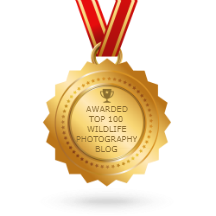I know in my last blog post I mentioned I would talk about the importance of knowing your location but before moving on to that I wanted to talk a little bit more about light. Specifically shade or shadows which can me a valuable asset during bright or harsh light situations. What sparked the interest in writing this topic was from a recent trip to Virginia lake (I know I know I sound like a broken record or that I don’t photograph anywhere else but hey this area right now is providing some great opportunities to learn more about lighting and has some cooperative subjects so why not take advantage of it).
On this particular morning the sky was clear, so shortly after sunrise the lighting conditions became harsh. Lucky for me as the sun began to swing further West the trees behind me casts shadows along the shoreline where many of my subjects were resting or feeding; including this Greater Yellowlegs (I know I know a Greater Yellowlegs again..but stick with me this is about learning light not what exotic birds we can find).
Let me paint the scene for you in your mind so you can understand the proper conditions for this type of image and why it works so well. As mentioned the light was harsh since it was a clear morning and it was about 30-40 mins after sunrise. Tall trees behind me were casting large shadows that covered the shoreline. The harsh sun was lighting up the distant foliage surrounding the pond which was being reflected in the calm waters. Since the light is so harsh the reflected colors are very saturated and vibrate.
This situation can be tricky to expose for since the surrounding colors in the background are so bright and vibrant we need to expose mainly for them but we also don’t want to unexposed to much that we force our subject to be too dark. Here I dialed in +0.3 on my exposure compensation to brighten my subject just enough that I knew I had details captured in the shadows and I was not blowing out my highlights. Here is an example of the raw file before working on it in post. You can see my subject is dark but detailed enough that we can easily tweak it in post to make a more evenly balanced image.
Below is the tweaked version in post. A little crop to get rid of the dark spots on the left of the bird, some dodging and burning to clean up the background and foreground, some levels/curves to bring up the exposure on our subject and then a little warming of our subject since it was in shade it had a cooler tone then I wanted. All in all not a major change but enough to enhance the subject; and as you can see that beautiful color in the BG and FG were already captured in camera and not created in post.
Keep in mind I do not use flash. I am not against using flash but personally I just never got into using it nor do I want to. But if you do have a flash this would be the scenario to use it. Popping a little fill flash on your subject would limit the amount of post processing work you would need to do with these images but again I am not a flash guy.
So getting back to this image I want to explain why I have come to like these scenarios. The main reason for me are the vibrant colors you capture in and around your subject. With the harsh light burning into your background the colors in it come to life and almost seem digitally altered. I have often seen images like this when I started in photography and figured the person tweaked and pushed the colors in post to make the image look that way. To my surprise that is not the case. With the proper background catching the right light the colors explored.
Let’s look at a very similar situation I had last year with a male Wood Duck(an uncommon species to the island of Newfoundland). In this image the sun was blocked by a high ridge behind me but was peeking over the top just enough to light up the fall colors on a birch tree that was behind my subject. The colors of the leaves reflected in the water turning it a vibrant orange/yellow. Since my subject was still shaded by the ridge I was able to get an even exposure on him and dial in the proper exposure to evenly balance out my background and my subject.
Here are a couple more examples using the same situation and approach. These were taking at a local pond that has becoming a favorite of mine for Wigeon. Seen here is the male American Wigeon followed by a female Eurasian Wigeon
Here is one final example to show that this situation can work for any type of subject. Here again my subject, the fox, was in shade while the background was lit up by the setting sun
I hope you have found these past two post helpful in learning about light and that it inspires you to try new things with your photography. If you haven’t signed up already to my blog please do so as I send out notifications once each new blog is posted and in that newsletter is also a Bonus Tip section which you might find useful as well. So please sign up at the top of this page.







